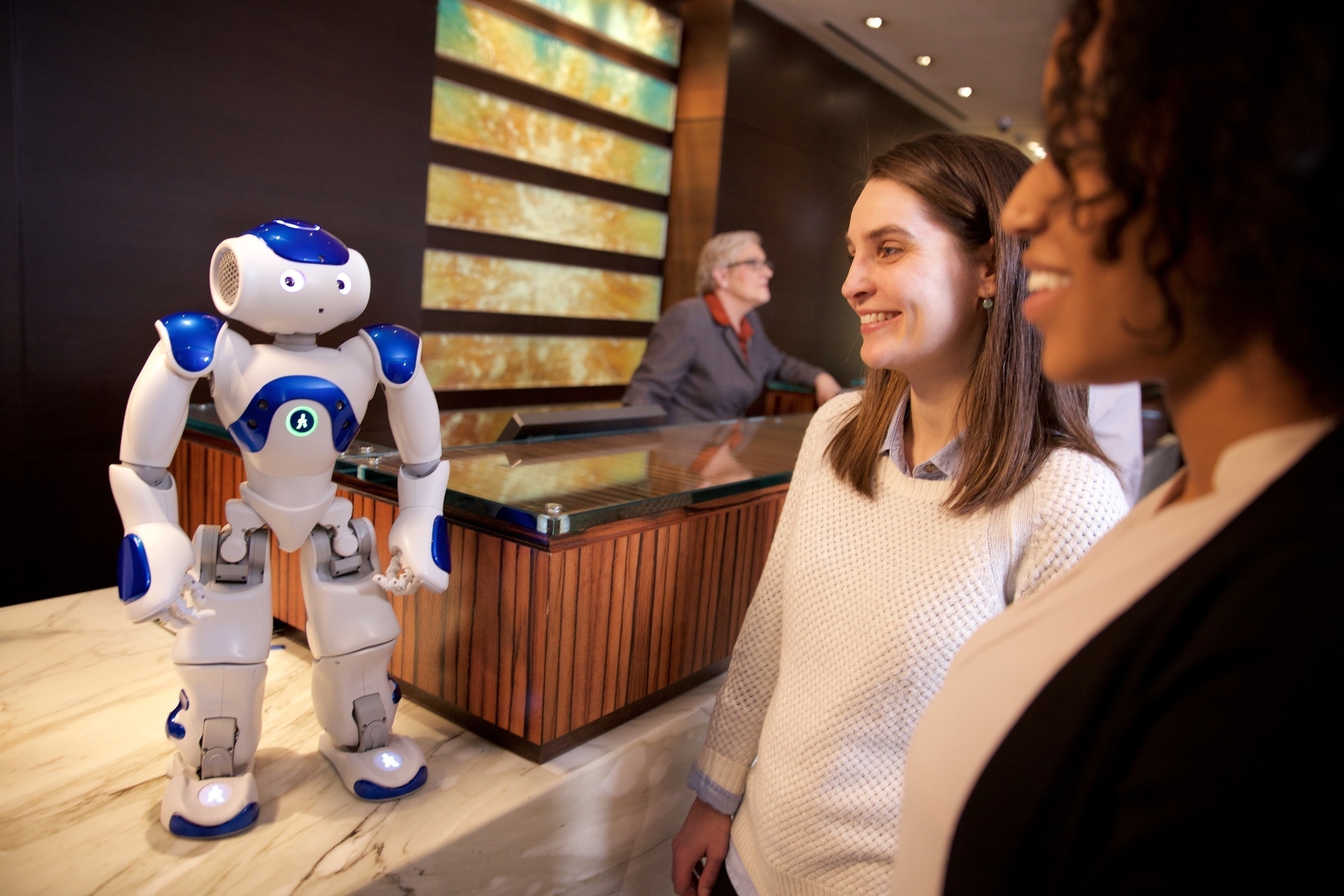
If IBM has its way, travelers may soon be asking cute robots for help with restaurant recommendations and directions than snappily-attired human hotel concierges. In partnership with Hilton, IBM has used its Watson AI (artificial intelligence) technology to power "Connie," a robot named after the hotel chain's founder, Conrad Hilton. Here are the details of what Connie, which is now in pilot, is intended to do:
Connie draws on domain knowledge from Watson and WayBlazer to inform guests on local tourist attractions, dining recommendations and hotel features and amenities.
Connie, named for Hilton's founder Conrad Hilton, marks the first time IBM has developed a Watson-enabled robot for the hospitality market. Connie will work side-by-side with Hilton's Team Members to assist with visitor requests, personalize the guest experience and empower travelers with more information to help them plan their trips.
Currently stationed near reception at the Hilton McLean in Virginia, Connie is learning to interact with guests and respond to their questions in a friendly and informative manner. Connie uses a combination of Watson APIs, including Dialog, Speech to Text, Text to Speech and Natural Language Classifier, to enable it to greet guests upon arrival and to answer questions about hotel amenities, services and hours of operation. By tapping into WayBlazer's extensive travel domain knowledge powered by Watson, Connie can also suggest local attractions outside the hotel.
The more guests interact with Connie, the more it learns, adapts and improves its recommendations. The hotel will also have access to a log of the questions asked and Connie's answers, which can enable improvements to guests' experiences before, during and after their stays.
(Image Credit: IBM)

Analysis: The Future of Hotel Customer Service or Just a Novelty?
Connie "looks like a fun, novel way to engage customers," says Constellation Research VP and principal analyst Natalie Petouhoff. "It’s really hard to say how effective it is beyond its novelty until I were to use it. I would want to test it to see how accurate it would be and what it’s limitations are."
This notion of interacting with non-human agents is not new, of course—customer service avatars or bots have been around on websites for years, albeit with mixed results. Connie will have to do better if it's going to make a major impact on how hotels run their concierge services.
"The initial service avatars were not well received because their cognition was so bad that people abandoned the interaction," Petouhoff says. "So while companies think they are saving money because they are not using agents, the reality is that they not only paid for bot software, but because the experience is so poor, people don’t get their issue resolved on the first contact and as a result they call an agent. It costs the company the money they spent on the software and agent-assisted service."
"That was unfortunate because as the bots got better or companies realized they did need a human behind the chat, customers were reluctant to use chat as it had gotten a black eye," she adds. "Now, the chat experience is much more mature and people are opting to use it."
For bots to deliver maximum customer-service value, they would need to understand the context of the interaction with the customer—something that would require feeding it lots of data about the customer, Petouhoff adds.
Connie wouldn't need all of that to tell hotel guests what restaurants are in the local area, but a more personalized Watson service would take into context more information about the guest and that would provide a better experience," Petouhoff says. "Because robots don’t have context, people opt to talk to a person. Sometimes the person isn’t much better, but that’s a whole other story about who you hire as customer-facing employees and whether you care about brand reputation."
Reprints
Reprints can be purchased through Constellation Research, Inc. To request official reprints in PDF format, please contact Sales.



